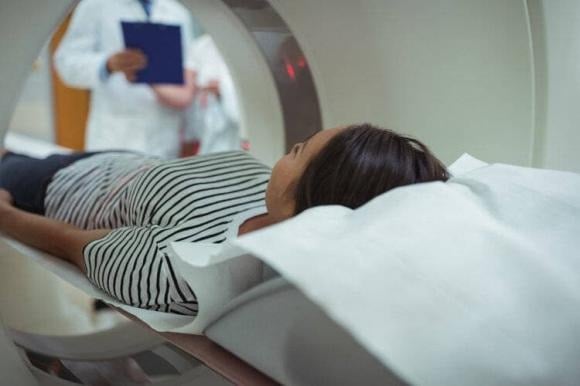Mrs. Ha, aged 52, accidentally discovered a tumor the size of an egg in her lower right abdomen. Upon touching it, she felt it was hard and, after researching online, assumed it was just a lipoma. However, her husband advised her not to trust online information and suggested she get it checked, especially as she had recently experienced loss of appetite and significant weight loss.
At the hospital, the doctor examined the tumor and found it to be abnormal. Typically, benign tumors have a soft texture, a smooth surface, defined borders, and are easily movable. Conversely, Mrs. Ha’s tumor was hard, had an uneven surface, ill-defined borders, and was difficult to move—all characteristics of a malignant tumor.
Further tests confirmed that Mrs. Ha had colorectal cancer, with a malignant tumor developing in the ileocecal region.
The doctor warned that when cancer occurs, the body sends out warning signals. Neglecting these abnormal signs can lead to more severe consequences.
Many people believe that cancer always presents with obvious symptoms, but in reality, typical signs often appear only in the middle or later stages. In the early stages, patients may not exhibit any particular symptoms.
If you experience any of the following five symptoms, it could indicate the presence of a malignant tumor. For early detection, it is best to get regular health check-ups of these five crucial areas every year.
Abnormal bowel habits – A warning sign of colorectal cancer
People often assume that cancer must be painful, but this is not always the case. For example, the most important sign of colorectal cancer is usually a change in the consistency of stool.
Symptoms such as changes in stool shape, hard stool, bleeding, diarrhea, or prolonged constipation could be warning signs. If you experience any of these issues, the best course of action is to undergo a colonoscopy for examination.

Persistent cough – A sign of lung cancer
A persistent cough that doesn’t improve with medication, especially in smokers, warrants a CT scan of the lungs.
In its early stages, lung cancer typically doesn’t cause coughing up blood or noticeable shortness of breath; instead, a persistent dry cough is the most common symptom. Unfortunately, this symptom can be mistaken for a sore throat or bronchitis, leading to a delay in diagnosis as people often don’t seek medical attention promptly.
If you have a long history of smoking, be proactive and get a CT scan of your chest to screen for lung cancer as early as possible.

Indigestion – A warning sign of stomach cancer
If you frequently experience symptoms such as a full stomach, acid reflux, burping, hiccups, or nausea after eating, don’t ignore them. In many cases, the only symptom of early-stage stomach cancer is indigestion.
To confirm the presence of stomach cancer, the most effective method is to undergo an endoscopy to detect any potential lesions.
Painless lump in the breast – A sign of breast cancer
Breast cancer doesn’t always cause pain. In fact, a painless lump is the most common indication of this type of cancer.
On the other hand, if you experience breast tenderness or swelling during your menstrual cycle, it is likely due to breast hyperplasia. However, if you detect a hard lump with an uneven surface, it is best to get it checked immediately with an ultrasound or mammogram to rule out the possibility of breast cancer.
Unexplained fatigue – A warning sign of liver cancer
Some cancers, such as liver cancer, present with very vague symptoms. Many patients only experience prolonged fatigue without an apparent cause. Usually, fatigue can be attributed to poor diet and sleep habits, leading many people to overlook this critical sign.
Individuals with a history of heavy alcohol consumption or hepatitis B and C infections should be especially vigilant. If you experience unusual fatigue, get your health checked immediately. The best way to detect liver cancer early is to undergo a color Doppler ultrasound in combination with an alpha-fetoprotein test.





































